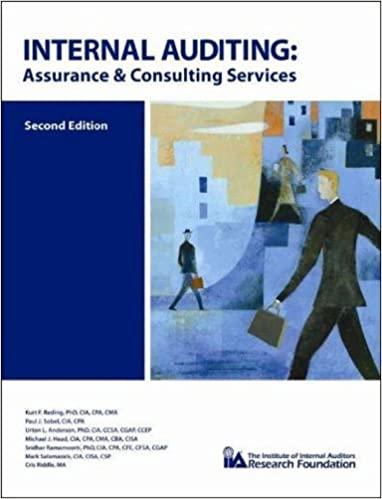5.62 (LO1 - LO3) Jessica James is considering a business venture - selling custom embroidered baseball caps from a pushcart kiosk at College Mall. The caps will be available in twelve different colors and one-size fits all. The caps' unique feature is that almost any name, phrase, or logo, can be stitched onto the cap while the customer waits. Thus, a customer can obtain a cap with his or her own name, monogram, special saying, or favorite logo in a wide-variety of thread colors, sizes, and fonts. Based on preliminary market research and input from the franchising company, Jessica plans on selling each embroidered cap for $20. Jessica plans to acquire the necessary technology (two industrial strength sewing machines hooked up to PC's with scanners and all of the necessary software) by obtaining a franchise from Made to Order Caps, Inc. Made to Order Caps, Inc. sells all of the necessary equipment and technology and provides the inventory of caps and other supplies. Additionally, Made to Order Caps, Inc. trains prospective franchisees such as Jessica in the basics of running the business and operating the machines. Jessica will need to buy the caps from Made to Order Caps, Inc. for $4 per cap and pay a royalty to the franchising company of $2 per cap sold. In addition, Jessica believes that each cap will use about $2.50 worth of supplies (including thread, replacement of sewing needles, machine maintenance, etc.). Finally, Made to Order Caps, Inc. requires that each franchisee invest $250 per month on leaflets and brochures to advertise the product. Jessica discovers that College Mall would supply her with the pushcart and all of the necessary equipment for proper display. The license from the mall also allows Jessica to use several electrical outlets and two telephone outlets. College Mall will pay for Jessica's electricity consumption, but she will have to obtain two business telephone lines at a cost of $50 per line per month. College Mall is willing to license the space and equipment to Jessica on a monthly basis for $1,970 per month. To generate maximum sales, Jessica wants to keep the pushcart open for business from 10AM to 10PM Monday through Friday, and from 10AM to 6PM on Saturday and Sunday. Jessica is willing to put in 50 hours at the kiosk, and she can obtain additional part-time help at $10 per hour (only one individual is required to operate the business). Jessica's only other significant expense is setting up to accept credit cards. Jessica anticipates that 75% of her sales will be credit card sales, and the credit card company charges Jessica a fee of 2% of the selling price. a. What is Jessica's monthly cost-volume-profit (CVP) model? (Assume that there are exactly 4 weeks per month). b. Calculate Jessica's monthly break-even point in baseball caps. What does this translate to in sales dollars? c. How much profit would Jessica earn in a month if she sold 1,000 caps? How many caps would Jessica have to sell to earn a target profit of $4,032 per month? d. Jessica has been toying around with how the quantity of caps she can sell is likely to vary inversely with the selling price. Jessica is keenly aware that the lower the price per cap, the more caps she can sell and vice-versa. She is determined to figure this relationship out and find the best price. After conducting extensive market surveys, Jessica believes that the local monthly demand for embroidered baseball caps is as follows: How does this piece of information alter Jessica's CVP model? What price per cap should Jessica charge to maximize profit? How much profit does she earn at this price? e. Jessica is almost done - she realizes that she forgot to include taxes as part of her decision model. Jessica believes that combined local, state, and federal taxes will be 25% of her net income. Does this piece of information affect Jessica's decision in part [d]? Does this change the profit-maximizing price? Does it change Jessica's profit? f. What do you think of Jessica's business venture








